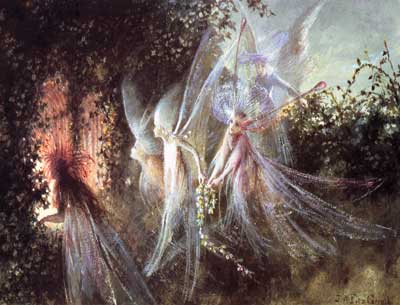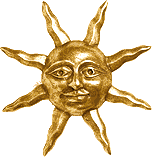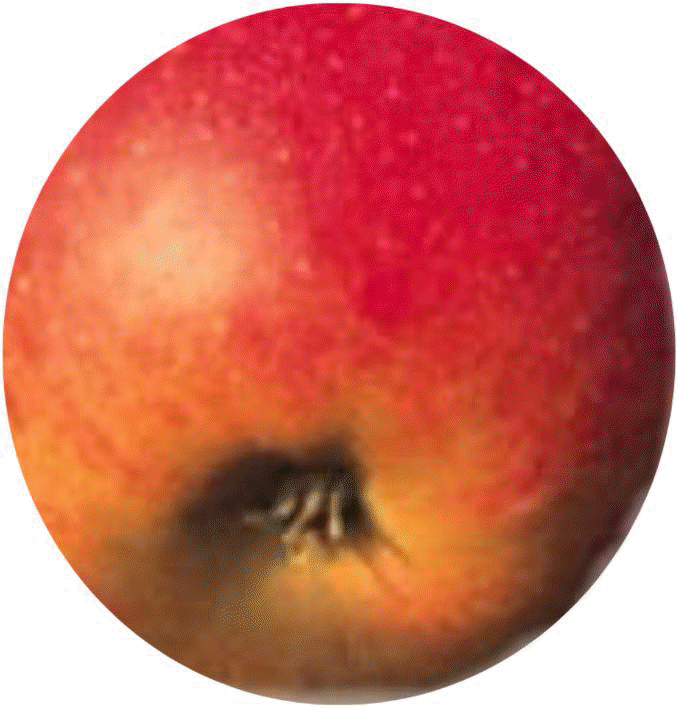|
The Faery
Healing Goddesses

Brigid: Matron
Goddess of Faery Healing
Aine: The Bright
Spark
Airmid: Keeper of
the Herbs of Healing
Morgen:
Faery Queen of Avalon
from
Faery
Healing: the Lore and the Legacy
Brigid ~
Matron Goddess of Faery Healing
 Brigid,
beloved Celtic goddess, was well-known throughout the British Isles as the three-aspected
goddess of poetry, smithcraft and healing. Occasionally the three aspects were portrayed
as three sisters, all named Brigid - an example of the “triple” form so beloved
of the Celts. She was sometimes said to be the daughter of the Dagda, the
“All-Father” of the Tuatha De Danaans. In Ireland she was known as Brigid, in
Scotland, as Brigid or Bride, and in Britain, she was known as Brigantia, goddess of the
Brigantes of Northern England. In spite of the fact that not many tales seem to have
survived about her, she looms larger than life in the psyche of the Celts of the British
Isles, and it is likely that her legends were juxtaposed onto those of the early Irish
Christian saint of the same name, who, in Wales, was known as St. Ffraid. Brigid,
beloved Celtic goddess, was well-known throughout the British Isles as the three-aspected
goddess of poetry, smithcraft and healing. Occasionally the three aspects were portrayed
as three sisters, all named Brigid - an example of the “triple” form so beloved
of the Celts. She was sometimes said to be the daughter of the Dagda, the
“All-Father” of the Tuatha De Danaans. In Ireland she was known as Brigid, in
Scotland, as Brigid or Bride, and in Britain, she was known as Brigantia, goddess of the
Brigantes of Northern England. In spite of the fact that not many tales seem to have
survived about her, she looms larger than life in the psyche of the Celts of the British
Isles, and it is likely that her legends were juxtaposed onto those of the early Irish
Christian saint of the same name, who, in Wales, was known as St. Ffraid.
She was, and is, the Goddess of poetry,
smithcraft and healing, and the Fire that is behind them all: the fire of the mind and
mind’s inspiration that sparks and ignites the poet’s creativity, the fire of
the forge and skill of the craftsman/woman, and the fires of life that must burn properly
so that life may continue, and healing occur. Each of these show themselves to be fires of
creation and transformation. Thus, she is the pre-eminent deity-saint of Celtic Healing.
The stories, but particularly the customs and
lore about Brigid in either her Pagan or Christian guise, inform us that we are dealing
with a very powerful Being, one of the “Old Ones,” deeply connected with the
primal powers of Life itself - fire, water, air, earth, origination, creation, formation,
and manifestation, fertility and abundance. (Chapter 1)
The legends of Brigid show her to be associated with that
borderlands/liminality/threshold state, which clearly links her to the Otherworlds,
including faery. Her association with liminal states is shown in her St. Brigid legends by
the fact that she was born at sunrise, and while her mother was straddling a threshold; it
is shown in her Goddess legends by the fact that she was of the Tuatha De Danann, yet
married to a Fomorian.
Brigid is associated with water as well as fire, and
many healing wells are sacred to her throughout the British Isles. Places where water
emerges from the earth are always considered thresholds between the worlds, the underworld
and middleworld, in this case. As a goddess of healing associated with seership and
liminal states of being, she is uniquely suited to be the especial matron goddess of faery
healing. (Chapter 15)
Aine
~ The Bright Spark
 < The Irish Goddess Aine was extremely popular in the area
of southern Ireland known as Munster, where she was considered the Queen of the Faeries.
She is thought to be a regional version of Anu, in whose honor two local mountains were
named. Quite likely, Anu is the same being as the great Celtic Mother Goddess Danu for
whom several rivers in Europe are named, and who was known in Ireland as Dana. Aine’s
lore links her with earth, air, fire and water. The two mountains were thought to be her
breasts; she had a home in a special hill named Cnoc Aine (Aine’s Hill), and was
thought to have created the enchanted lake known as Lough Gur, over which she sometimes
appeared in the shape of a faery whirlwind. Aine is very much associated with the sun, and
was known as the wife of the sea god Manannan MacLir, from whose bed she arose every
morning. < The Irish Goddess Aine was extremely popular in the area
of southern Ireland known as Munster, where she was considered the Queen of the Faeries.
She is thought to be a regional version of Anu, in whose honor two local mountains were
named. Quite likely, Anu is the same being as the great Celtic Mother Goddess Danu for
whom several rivers in Europe are named, and who was known in Ireland as Dana. Aine’s
lore links her with earth, air, fire and water. The two mountains were thought to be her
breasts; she had a home in a special hill named Cnoc Aine (Aine’s Hill), and was
thought to have created the enchanted lake known as Lough Gur, over which she sometimes
appeared in the shape of a faery whirlwind. Aine is very much associated with the sun, and
was known as the wife of the sea god Manannan MacLir, from whose bed she arose every
morning.
She was worshiped at the Summer Solstice, at
which time people lit torches of hay upon her hill of Cnoc Aine, carried them around the
hill in a counterclockwise direction, and conveyed them home, bearing them aloft through
their fields, while they waved the blessed fire over livestock and crops. Not surprisingly, Aine is also linked with the
fertility of the land. Because of her associations with fire and water, she was also
associated with healing. It was believed that she regulated the vital spark of life's
fire, which, like the sun's daily traversal of the sky, circulated through the body every
24 hours. If bloodletting occurred on her sacred days, which were the Friday, Saturday,
and Sunday prior to Lughnasadh, it was thought the sacred life spark would flow from the
body and the patient would die.
Aine is therefore associated with both the
life-giving sun itself, and the sun's power in the human body, through which the spark was
thought to travel by means of the blood. These folkloric remains point to the fact that in
days past there must have been a full, rich tradition of healing in which Aine - as the
spark of life, the sun-spark within the blood - played a significant part.
(Chapter 15)
Airmid
~ Keeper of the Healing Herbs
 The Goddess Airmid is best known as an herbalist, and
therefore, may be associated with these green gifts of the earth. Airmid was the daughter
of the Tuatha physician Dian Cecht, and her brother Miach was also a skilled healer whose
powers exceeded those of his father. Airmid's association with herbalism is illustrated in
the story of her discovery of the 365 healing herbs growing upon her brother's grave - one
herb to cure illnesses of each of the 365 nerves of the human body as well as one for each
and every day of the year. She gathered these carefully in her cloak, but unfortunately,
her jealous father mixed them up so that their applications would not be known. I
like to think that Airmid, wise healer that she was, already knew these herbs and their
uses and had them firmly in her heart and mind before her father mixed them. The Goddess Airmid is best known as an herbalist, and
therefore, may be associated with these green gifts of the earth. Airmid was the daughter
of the Tuatha physician Dian Cecht, and her brother Miach was also a skilled healer whose
powers exceeded those of his father. Airmid's association with herbalism is illustrated in
the story of her discovery of the 365 healing herbs growing upon her brother's grave - one
herb to cure illnesses of each of the 365 nerves of the human body as well as one for each
and every day of the year. She gathered these carefully in her cloak, but unfortunately,
her jealous father mixed them up so that their applications would not be known. I
like to think that Airmid, wise healer that she was, already knew these herbs and their
uses and had them firmly in her heart and mind before her father mixed them.
Airmid is also associated with the healing powers of water and sound. At the Second Battle
of Moytura, her father placed healing herbs into the Well of Slaine, and Airmid, her
brothers, and her father chanted incantations over the Well to empower it. These
waters were used to heal dead and wounded warriors. (Chapter
15)
Morgen ~ Faery Queen of Avalon
 The British goddess Morgen was known as a skilled
herbal healer. With her eight sisters she lived on holy isle reached only by traveling on
the Otherworld Sea. This island may well have been the prototype for the legend of the
mystic Otherworld Isle of Apples known as Avalon. Apples were the Celtic fruit of life,
death, and immortality. Morgen dwelt on this Isle with her sisters, practicing the arts of
healing, and was the ruler of the island, which was also known as the Fortunate Isle. The British goddess Morgen was known as a skilled
herbal healer. With her eight sisters she lived on holy isle reached only by traveling on
the Otherworld Sea. This island may well have been the prototype for the legend of the
mystic Otherworld Isle of Apples known as Avalon. Apples were the Celtic fruit of life,
death, and immortality. Morgen dwelt on this Isle with her sisters, practicing the arts of
healing, and was the ruler of the island, which was also known as the Fortunate Isle.
Morgen was sometimes said to be a daughter of the
island's king, Avallach, whose name is derived from the Celtic word Abal, which
means apple.
According to the Vita Merlini
(Life of Merlin) by Geoffrey of Monmouth, King Arthur was taken to her isle to be healed
after his last battle. In other accounts, Morgen was one of the "three
queens" who came in a barge to fetch him to their isle of healing.
Morgen has also come down to us in somewhat
different form as the Morgan le Fey of the Arthurian tales. The name Morgen
itself is thought by some to mean sea-borne, as in one who comes from the sea,
while other scholars say that it is related to the Irish Morrigan, meaning Great
Queen. (Chapter 15)
Welcome
Homepage
Readings Faery Healing About the Book About the Cover
Table of Contents
Endorsements Reviews Resources
Getting Started
Faery Healing Goddesses
Faery
Altar Buy the Book
Faery Links About the Author
Invocation
of Peace Contact
Credits
What's New
|

 Brigid,
beloved Celtic goddess, was well-known throughout the British Isles as the three-aspected
goddess of poetry, smithcraft and healing. Occasionally the three aspects were portrayed
as three sisters, all named Brigid - an example of the “triple” form so beloved
of the Celts. She was sometimes said to be the daughter of the Dagda, the
“All-Father” of the Tuatha De Danaans. In Ireland she was known as Brigid, in
Scotland, as Brigid or Bride, and in Britain, she was known as Brigantia, goddess of the
Brigantes of Northern England. In spite of the fact that not many tales seem to have
survived about her, she looms larger than life in the psyche of the Celts of the British
Isles, and it is likely that her legends were juxtaposed onto those of the early Irish
Christian saint of the same name, who, in Wales, was known as St. Ffraid.
Brigid,
beloved Celtic goddess, was well-known throughout the British Isles as the three-aspected
goddess of poetry, smithcraft and healing. Occasionally the three aspects were portrayed
as three sisters, all named Brigid - an example of the “triple” form so beloved
of the Celts. She was sometimes said to be the daughter of the Dagda, the
“All-Father” of the Tuatha De Danaans. In Ireland she was known as Brigid, in
Scotland, as Brigid or Bride, and in Britain, she was known as Brigantia, goddess of the
Brigantes of Northern England. In spite of the fact that not many tales seem to have
survived about her, she looms larger than life in the psyche of the Celts of the British
Isles, and it is likely that her legends were juxtaposed onto those of the early Irish
Christian saint of the same name, who, in Wales, was known as St. Ffraid. < The Irish Goddess Aine was extremely popular in the area
of southern Ireland known as Munster, where she was considered the Queen of the Faeries.
She is thought to be a regional version of Anu, in whose honor two local mountains were
named. Quite likely, Anu is the same being as the great Celtic Mother Goddess Danu for
whom several rivers in Europe are named, and who was known in Ireland as Dana. Aine’s
lore links her with earth, air, fire and water. The two mountains were thought to be her
breasts; she had a home in a special hill named Cnoc Aine (Aine’s Hill), and was
thought to have created the enchanted lake known as Lough Gur, over which she sometimes
appeared in the shape of a faery whirlwind. Aine is very much associated with the sun, and
was known as the wife of the sea god Manannan MacLir, from whose bed she arose every
morning.
< The Irish Goddess Aine was extremely popular in the area
of southern Ireland known as Munster, where she was considered the Queen of the Faeries.
She is thought to be a regional version of Anu, in whose honor two local mountains were
named. Quite likely, Anu is the same being as the great Celtic Mother Goddess Danu for
whom several rivers in Europe are named, and who was known in Ireland as Dana. Aine’s
lore links her with earth, air, fire and water. The two mountains were thought to be her
breasts; she had a home in a special hill named Cnoc Aine (Aine’s Hill), and was
thought to have created the enchanted lake known as Lough Gur, over which she sometimes
appeared in the shape of a faery whirlwind. Aine is very much associated with the sun, and
was known as the wife of the sea god Manannan MacLir, from whose bed she arose every
morning.  The Goddess Airmid is best known as an herbalist, and
therefore, may be associated with these green gifts of the earth. Airmid was the daughter
of the Tuatha physician Dian Cecht, and her brother Miach was also a skilled healer whose
powers exceeded those of his father. Airmid's association with herbalism is illustrated in
the story of her discovery of the 365 healing herbs growing upon her brother's grave - one
herb to cure illnesses of each of the 365 nerves of the human body as well as one for each
and every day of the year. She gathered these carefully in her cloak, but unfortunately,
her jealous father mixed them up so that their applications would not be known. I
like to think that Airmid, wise healer that she was, already knew these herbs and their
uses and had them firmly in her heart and mind before her father mixed them.
The Goddess Airmid is best known as an herbalist, and
therefore, may be associated with these green gifts of the earth. Airmid was the daughter
of the Tuatha physician Dian Cecht, and her brother Miach was also a skilled healer whose
powers exceeded those of his father. Airmid's association with herbalism is illustrated in
the story of her discovery of the 365 healing herbs growing upon her brother's grave - one
herb to cure illnesses of each of the 365 nerves of the human body as well as one for each
and every day of the year. She gathered these carefully in her cloak, but unfortunately,
her jealous father mixed them up so that their applications would not be known. I
like to think that Airmid, wise healer that she was, already knew these herbs and their
uses and had them firmly in her heart and mind before her father mixed them. The British goddess Morgen was known as a skilled
herbal healer. With her eight sisters she lived on holy isle reached only by traveling on
the Otherworld Sea. This island may well have been the prototype for the legend of the
mystic Otherworld Isle of Apples known as Avalon. Apples were the Celtic fruit of life,
death, and immortality. Morgen dwelt on this Isle with her sisters, practicing the arts of
healing, and was the ruler of the island, which was also known as the Fortunate Isle.
The British goddess Morgen was known as a skilled
herbal healer. With her eight sisters she lived on holy isle reached only by traveling on
the Otherworld Sea. This island may well have been the prototype for the legend of the
mystic Otherworld Isle of Apples known as Avalon. Apples were the Celtic fruit of life,
death, and immortality. Morgen dwelt on this Isle with her sisters, practicing the arts of
healing, and was the ruler of the island, which was also known as the Fortunate Isle.